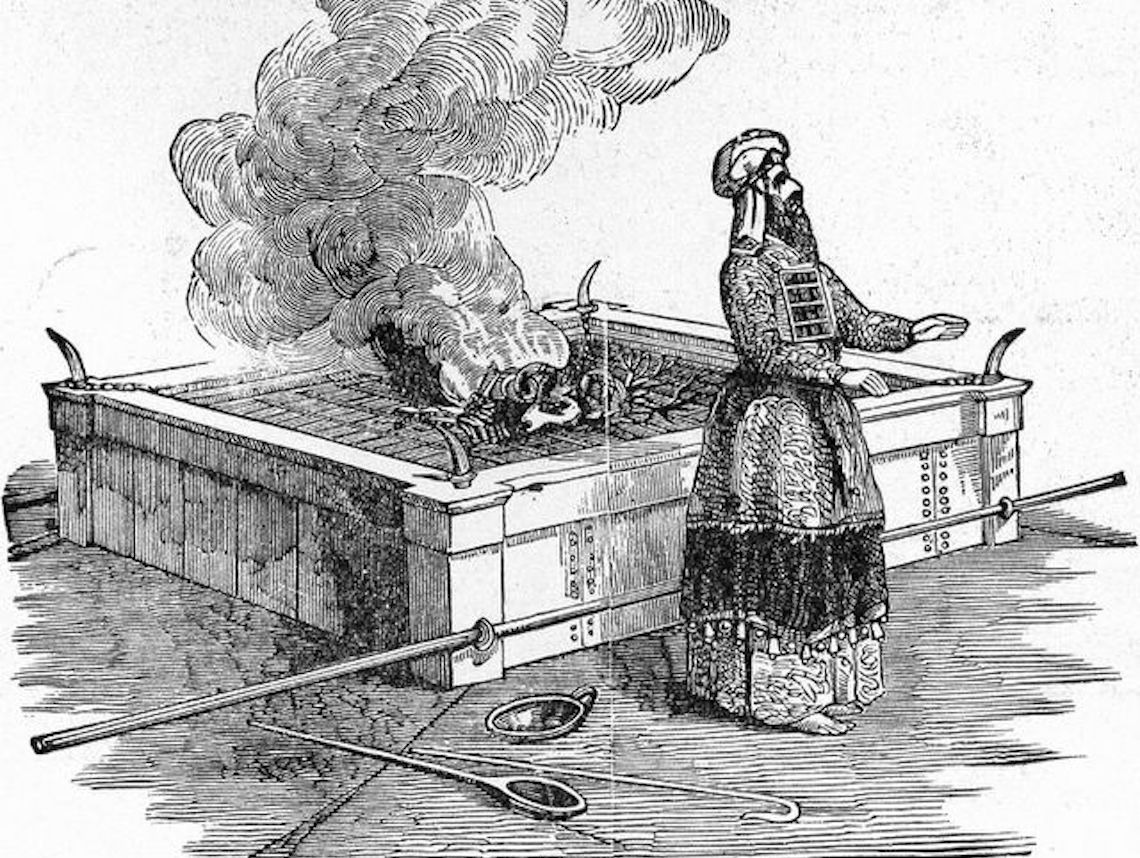
Parashat Tzav (Leviticus 6:1-8:36)
Today, we think of Moses Maimonides (1135-1204) with frank admiration, but during his lifetime and after his death, he sparked one of Judaism’s angriest disputes. The so-called “Maimonidean Controversy” came to a head in 1232, when Dominican friars in France burned copies of his “Guide for the Perplexed” — allegedly at the urging of Jewish leaders.
These extreme measures represented a rejection of, among other things, Maimonides’ willingness to read Scripture figuratively, rather than literally, which offended many pious Jews.
For example, Maimonides describes the regimen of Temple sacrifices in the “Guide for the Perplexed” as idolatrous practices, repackaged for the sake of monotheism: God “transferred to His service that which had formerly served as worship … of things imaginary and unreal.”
In other words, Maimonides views sacrifice not in a favorable way but rather in a patronizing way. God commanded it, only because our small-minded, idolatrous forebears simply couldn’t imagine any other way to worship.
In truth, one could forgive the comparison of Israelite sacrificial rites to pagan ones. The Temple priests sacrifice “a tenth of a measure of choice flour with a quarter of a hin of beaten oil mixed in, and a libation of a quarter hin of wine for one lamb” (Exodus 29:40). Meanwhile, the “Iliad” describes a sacrifice to Apollo in similar terms: “When they had done praying and sprinkling the barley-meal … they killed and flayed [the cattle], cut out the thigh-bones … laid them on the wood fire and poured wine over them.”
So we can see why Maimonides felt the need to explain the pagan roots of Israelite worship. How much more help do we, who are even further removed from the biblical text, need? Who among us spontaneously connects with the strange and troubling rituals of this week’s portion, Tzav? If anything, taken on its own terms, Tzav seems to have nothing to do with Judaism as we experience it.
Our portion details the special clothes of linen designed for an isolated class of priests, who offer animal (and other) sacrifices reported to sate God with their “pleasing odor” (Leviticus 6:8). Moses then installs his brother in the priestly role, by smearing the animal’s blood on Aaron’s thumb, big toe and ear lobe (Leviticus 8:23), in a scene that most of us simply never read.
These Temple rites presuppose a relationship with God that feels inauthentic to most of us today, which is to say that most Jews simply do not believe that a priest bridges heaven and earth by spilling the blood of animals.
To be fair, we adjust for some degree of foreign-ness in the text. We accept that Torah comes down to us over millennia, from a distant land. And even so, we are willing to seek out meaningful themes, such as sin and peace (also translated as “well-being”), which are embedded in the names of the sacrifices themselves.
Still, how many of us believe in that God? How much easier to connect with Abraham, who talks God down from the impulse to destroy Sodom! Narrative passages of moral courage and the struggle with the Holy One depict a divine-human partnership that appeals to the modern mind. We derive value from metaphor, creative tension and morality tales. But, by and large, we balk at the literal spirit of raw “because-I-said-so” obedience and the collective atonement of blood-drenched sacrifice.
How then, can we connect to Tzav?
Perhaps we can connect, not to Tzav but to our tradition around Tzav. What if we join Maimonides and commune around our religion’s unease about the Temple sacrifices? We’re in good company, and Maimonides was not the first to be troubled by the sacrifices. Jewish discomfort stretches as far back as the Bible itself, when Israel still practiced these rituals.
Some of the prophets challenged these practices on the grounds that sacrifices missed the point: “I have sought lovingkindness, not sacrifices; knowledge of God, not burnt offerings” (Hosea 6:6). And if the prophets early on noticed the risk posed by sacrifices — the risk of dislocating moral obligation with a ritual act — then the rabbis were quick to pick up the argument.
Consider the passage from Jeremiah, which the rabbis pointedly designated as the haftarah for Tzav, as if to counterbalance it: “You might as well add your burnt offerings [which are not meant to be eaten] to your other sacrifices and eat the meat! For when I freed your fathers from the land of Egypt, I did not speak with them or command them concerning burnt offerings or sacrifice” (Jeremiah 7:21-22).
No sooner did our tradition enshrine animal sacrifice than our leaders turned around and questioned it. Admittedly, to judge by the comments of the rabbis and the medieval philosophers, no easy answers were to be found. Fortunately, however, our sages have taught us that ownership of our tradition does not reside in the stagnant repetition of sacred text. Lively, committed and multilateral debate about Torah, together with its repetition, sanctifies that ownership, generation after generation.
JOSHUA HOLO is dean of the Hebrew Union College-Jewish Institute of Religion, Jack H. Skirball Campus in Los Angeles.






















 More news and opinions than at a Shabbat dinner, right in your inbox.
More news and opinions than at a Shabbat dinner, right in your inbox.